If you’re looking for things to do in Death Valley National Park, you’ve come to the right place. Death Valley is the hottest, driest place in the United States with extreme summer temperatures and drastically contrasting elevations throughout the park. Death Valley is a unique collection of some of the best that a desert environment has to offer. Don’t let its name deter you, because you’re in for a real treat when visiting this remarkable National Park.
Death Valley is a desert environment unlike any you’ve ever seen. Formed by volcanic activity, erosion, and floods, the landscape is awe-inspiring and humbling. This park is an example of nature’s prowess, and every view will leave you more and more impressed. From salt flats to wind-swept sand dunes, the park offers one unique experience after the next. So prepare yourself to tackle the desert heat, bring lots of water, your hiking shoes and discover for yourself why this stunning landscape has become a beloved National Park.
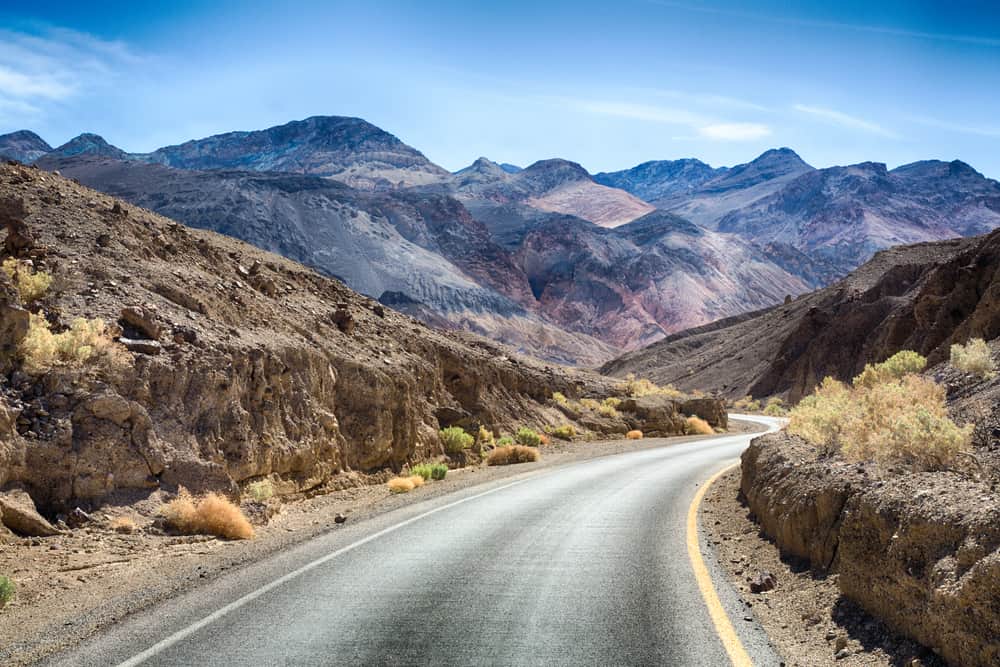
9 Unforgettable Things To Do In Death Valley
#1. Head To Dante’s View For A Stunning View Of Badwater Basin Below
Dante’s View is one of the best things to do in Death Valley when searching for jaw dropping panoramic views. The drive from Furnace Creek is 45 minutes with the final section of the drive climbing uphill on a narrow road up to the viewpoint. The best part is that all you have to do to enjoy the view is step out of your car. There is convenience in its accessibility, though it also means the crowds will be greater. There is no hiking involved to experience the impressive views, although the actual Dante’s Peak and its neighbor Coffin Peak are .4 miles and 1 mile from the parking lot respectively. From 3,000 feet above Badwater Basin, you get a unique bird’s-eye view of the valley below, the surrounding mountain ranges, and the startlingly white salt flats.
Dante’s View is located on the ridge of the Black Mountains. Short pathways allow visitors to walk the ridge to find a suitable spot for taking in the views. Dante’s View is worth the stop at any time of day, any time of year. The morning offers cooler temperatures, although the high elevation of the viewpoint makes for cooler temperatures in general. At night, Dante’s View can be a perfect location for stargazing. Be sure to visit the viewpoint on a clear sky day so the views are completely unobscured. Fortunately the dry air and lack of rain in the desert, combine for a high probability of good viewing weather. Enjoy the views of the valley below and rejoice in the fact that you’re enjoying cooler temperatures than your fellow tourists on the valley floor below.
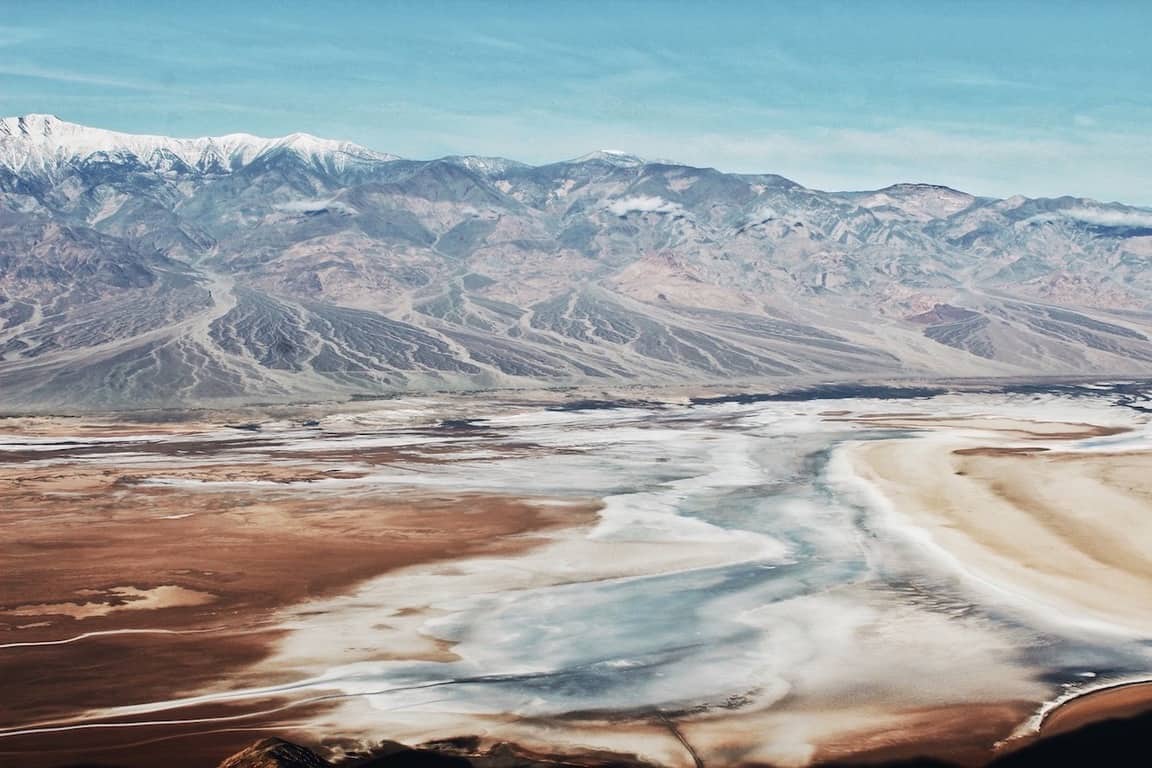
#2. Visiting Zabriskie Point Is One Of The Most Popular Things To Do In Death Valley
It’s not difficult to see why visiting Zabriskie Point is one of the most popular things to do in Death Valley. These beautiful eroded mountains are part of the Amargosa Range. Though the mountains don’t have quite the color explosion of Artist’s Palette, they still display stunning shades of purple, blue, and yellow. This viewpoint is also an ideal spot for catching the sunrise and sunset, as the sky adds additional vibrant colors to the landscape. You’ll no doubt be sharing the viewpoint with many photographers eager to capture the unbelievable scene on camera.
Zabriskie Point is among the easily accessible things to do in Death Valley. After a short drive from Furnace Creek, you’ll arrive at a parking lot and a paved path leading up to the viewpoint. Though you’ll likely be joined by large crowds, there’s plenty of room on the viewing platform to get that perfect photo shot you wanted. The view of the mountains and valleys is impressive in all directions. For those more adventurous souls looking for a workout and an immersive experience, you’ll want to check out the Badlands Loop as it is one of the coolest Death Valley hikes! Badlands Loop is a 2.5 mile hike that starts and ends at Zabriskie Point. There’s nothing quite like weaving your way through the maze of jagged eroded mountains.
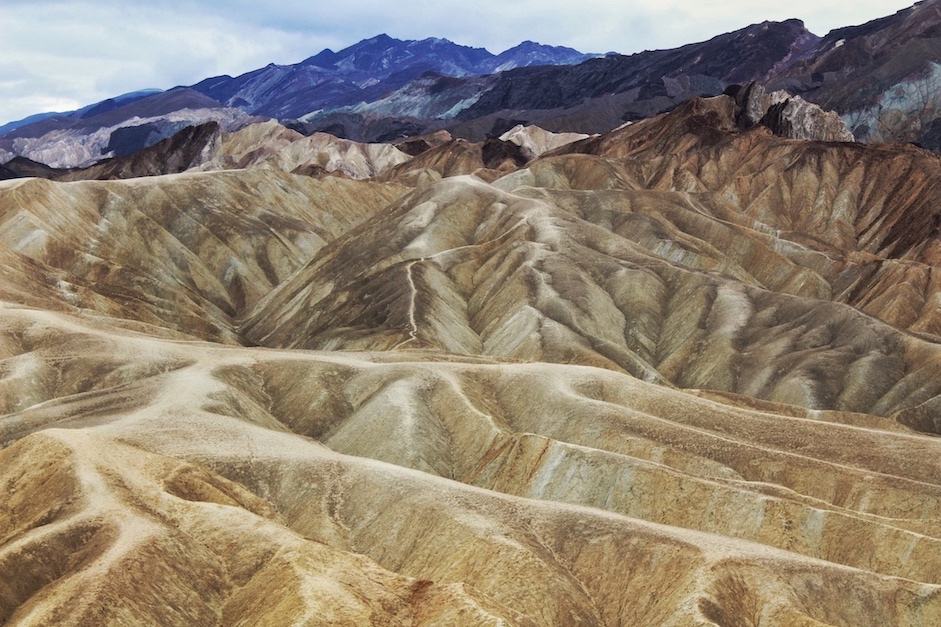
#3. Visit The Lowest Point in North America At Badwater Basin
Adding Badwater Basin to the list of the best things to do in Death Valley is a no brainer. It is easily one of the most popular spots in Death Valley, and as a result you should be prepared to share the salt flats with many tourists anxious to take in the vast salty expanse. At an elevation of 282 feet below sea level, Badwater Basin is the lowest point in North America. That alone is enough to make it a novelty. When you pull into the parking lot, you’ll see a sign on the mountain across from you indicating the height of sea level. When put in perspective like that, you begin to understand just how remarkably low Badwater Basin lies. Head from the parking lot out onto the wood platform, and continue past it down the brilliantly white lane. Though the sign marking the lowest point in North America is located close to the parking lot, the actual low point is to the west and changes with the weather conditions.
As you walk further out into the salt flats, you’ll see the famous hexagonal shapes. Unlike Devil’s Golf Course, Badwater Basin is heavily affected by the flash floods in Death Valley. The floods create pools of standing water. As the water evaporates (the evaporation rate is ridiculously fast in Death Valley), it dissolves some salt and leaves new salt crystals in its place. This keeps the salt formations intact and keeps the general landscape relatively flat and level. The entirety of the salt flats covers 200 square miles, though many visitors stay fairly close to the wood platform. Regardless of where you stand in the flats you are struck with a sense of awe while gazing at the sparkling white expanse around you and the towering mountains to the sides. The Mojave Desert holds all sorts of wonders, and Badwater Basin is not one to be missed.
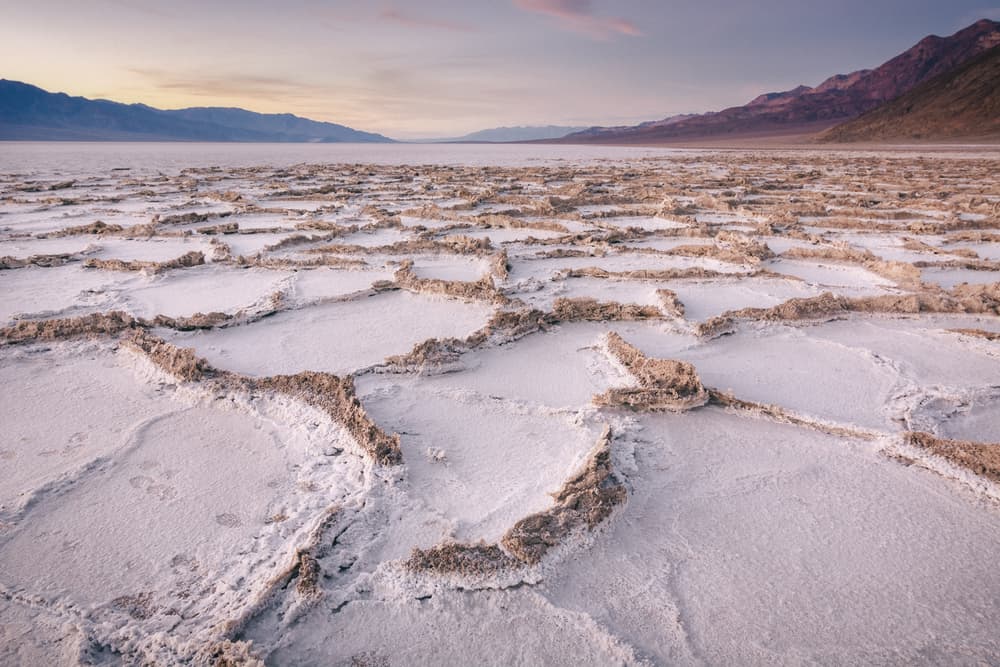
#4. Add Traversing The Mesquite Flat Sand Dunes To Your List Of Things To Do In Death Valley
There’s no better way to start your Death Valley trip than an adventure through the Mesquite Flat Sand Dunes. The parking lot and entrance to the dunes begins a couple miles from Stovepipe Wells, and it makes for a great first stop as you enter the park. Though these majestic dunes are not the tallest in the park, they are the most accessible and are stunning and otherworldly. The mountains frame the picture, and the wind (which has the potential to get fairly intense), shifts the sands, constantly creating a new landscape. While watching the shifting sands can be fascinating, you’ll ideally want to walk the dunes when there’s minimal wind. The sand can really sting as it hits your body and makes for a less pleasant experience.
If you’re looking for the ultimate photography experience, you’ll want to visit the dunes around sunrise and sunset when the lighting is spectacular. The shadows on the dunes also make for dramatic pictures, adding depth, and defining the curvature of the sand. Arriving early in the morning has other benefits as well. You’ll have the possibility of seeing animal tracks in the sand left the night before, and you’re likely to see the dunes in their most pristine condition before they’ve been walked all over by tourists throughout the day. Though many tourists come to visit this remarkable piece of nature, the dunes make up a vase expanse of land so they never feel overcrowded. There’s no trails or paths as the dunes are constantly shifting. Your experience out on the dunes can be as short or long and as easy or difficult as you make it. So pave your own route and find the dunes that speak to you.
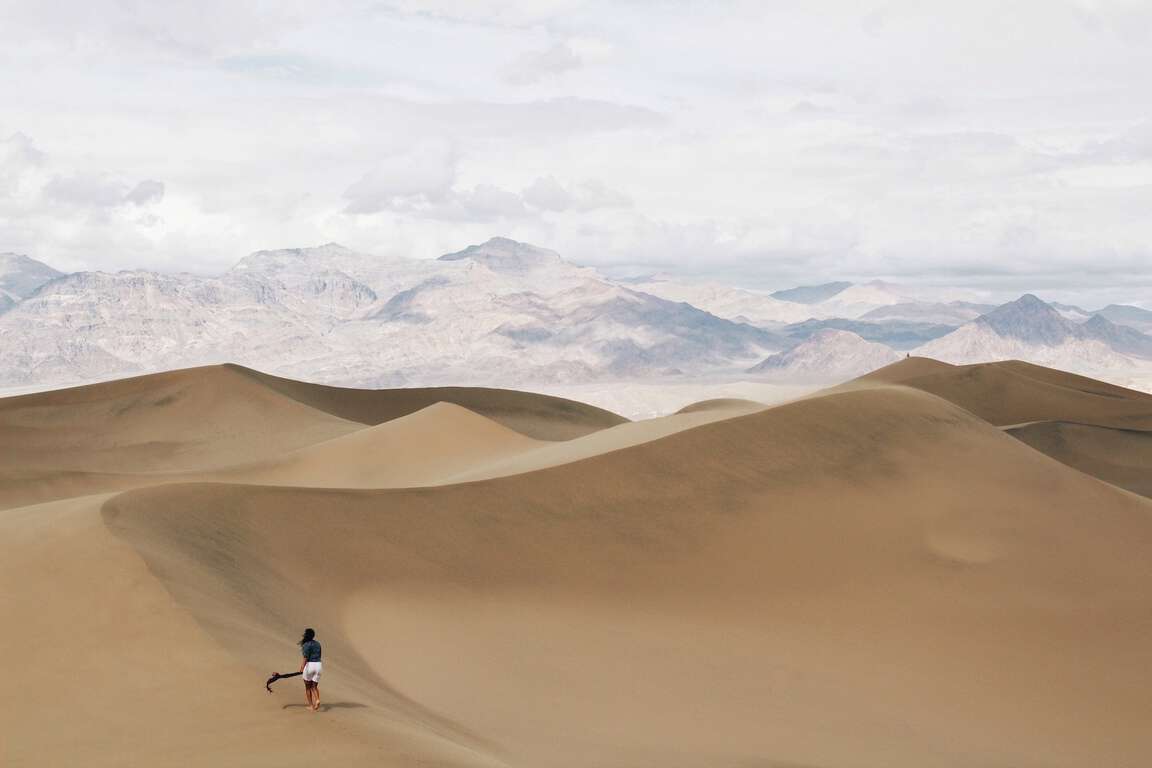
#5. Visit Artists Drive and Artists Palette To See Vibrant Natural Colors
You would never expect to see such vibrant life-giving color in a place called Death Valley, and yet there lies Artists Drive and Artists Palette. Taking in the spectacular views along the appropriately named Artists Drive is one of the best things to do in Death Valley to see the undeniably brilliant effects of metal oxidation. The eye-catching colors are beautiful at any time of day but light up in especially striking hues in the late afternoon and early evening.
Whether you are just passing through the park or are staying for an extended period of time, Artists Drive is an ideal activity for many, as it is easily accessible and many of the views can be seen from the comfort of your car. The whole drive is a 9 mile, one way road that winds through the mountains and canyons. The most well-known stop along the drive is at Artists Palette which you’ll hit roughly 5 miles into the drive. There are many turnouts throughout the drive to allow people to get out of their cars and appreciate the views, including that of the basin below.
If you only make one stop along Artists Drive, it has to be at Artists Palette. When you reach Artists Palette you’ll find a small parking lot and a short staircase leading back into the colorful mountainside. This is your opportunity to see the dazzling mix of colors, including turquoise and magenta, up close and personal. Take some time to walk through the wash and gaze up at the mountains around you. You’ll find yourself among the people lucky enough to be a part of one of nature’s most impressive paintings.
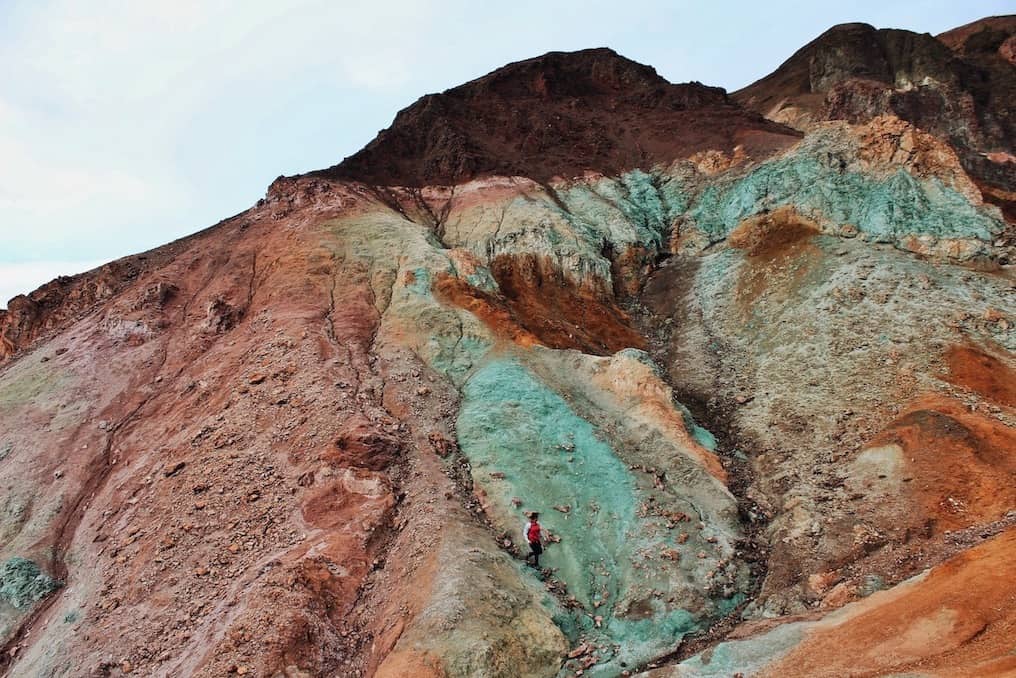
#6. Tackling The Trails In Golden Canyon Is Among The Best Things To Do In Death Valley For Avid Hikers
If you enjoy hiking, Golden Canyon should be a priority when checking off your list of things to do in Death Valley. In addition to the unique, constantly changing rock formations, Golden Canyon also houses a number of the filming locations from Star Wars Episode IV: A New Hope. The hikes through Golden Canyon are easy to moderate, and they take you through the most fascinating rock formations. Just 10 minutes from Furnace Creek, you’ll find the parking lot and trailhead. There are a number of different hiking route options when starting at Golden Canyon. The first option is to hike the Golden Canyon Trail to Red Cathedral for a total of 2.9 miles. The red rock, caused by oxidation, is remarkable in contrast to the yellow and brownish landscape surrounding it. Most of this trail is relatively easy, but as you get closer to the base of Red Cathedral, there is rock scrambling involved.
The second most popular hiking route takes you from Golden Canyon to Zabriskie Point. This is a 6.1 mile roundtrip hike of moderate difficulty. You’ll enter the wash and follow signs for Zabriskie Point. You’ll connect up with Gower Gulch around 1.85 miles into the hike and will hike a narrow uphill path out of the gully. And of course at the end of the 3.05 miles, you are rewarded with the unmatched views of Zabriskie Point. A third possible option is hiking the 4 mile Gower Gulch Loop, the first mile of which takes you through Golden Canyon. It’s easy to spend much of the day exploring the paths in and out of Golden Canyon. The endless hiking and adventure possibilities make it one of the best things to do in Death Valley.
The hiking paths in Golden Canyon are very exposed, and you’ll want to bring ample water especially when the temperatures are higher. Because of the layout of the landscape and the many side paths leading off the main ones, it’s not always easy to follow your intended path. Pay attention to the signs and stick to the designated trails, and you should be fine. Though it rains very rarely in Death Valley, flash floods are known to happen, and you definitely don’t want to be down in the washes when they occur. In addition to flooding the trail, the rain causes the already soft walls of Golden Canyon to destabilize which can lead to potential mudslides. Check the weather forecast ahead of time and plan accordingly.
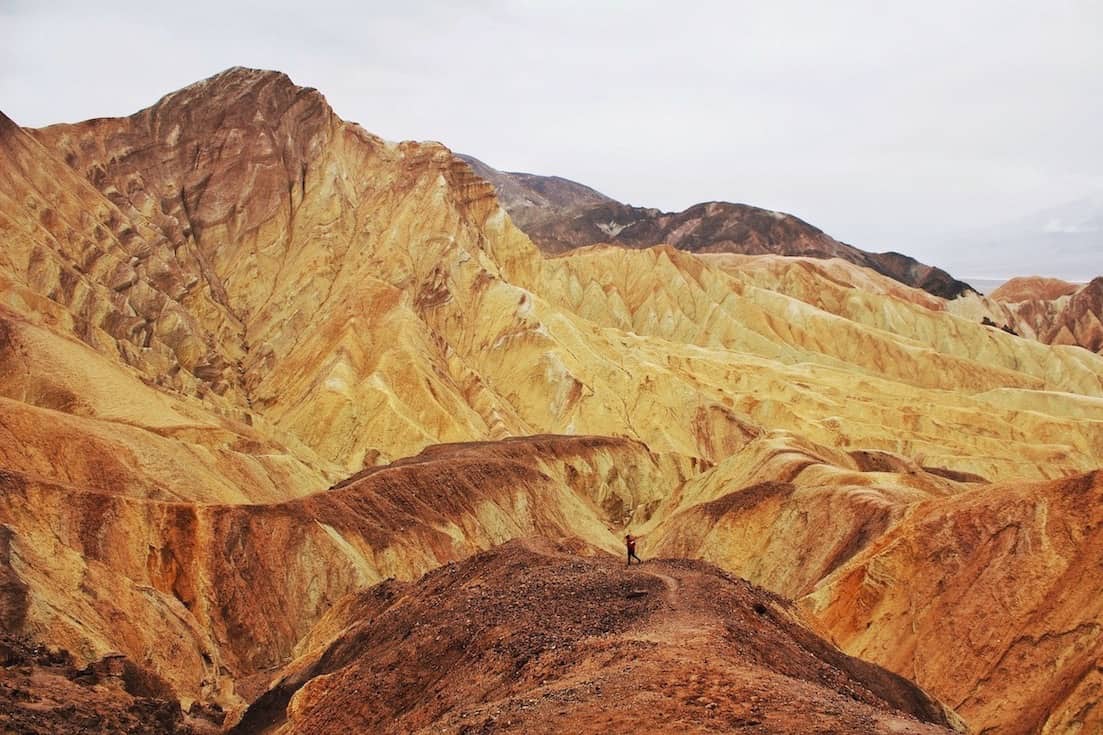
#7. Carefully Explore The Salt Pans Of The Appropriately Named Devil’s Golf Course
With names like Devil’s Golf Course, Dante’s View and Coffin’s Peak, you’d think visitors would be deterred from visiting this desert landscape. And yet almost one million people visit Death Valley every year, and these darkly named locations are among the most popular things to do in Death Valley. The Devil’s Golf Course got its name from a 1934 National Park Service guide book that said it was a location where “only the devil could play golf.” Once a giant lake, this dried up landscape has become a jagged salt pan shaped over thousands of years into the foreboding shapes it displays today.
Badwater Basin is often the star of the show when you think about salt pans in Death Valley. As a result, the Devil’s Golf Course is less frequented by visitors, but it certainly deserves its moment in the sun. Unlike Badwater Basin which is affected and smoothed out by the occasional flash floods, Devil’s Golf Course remains at a height above flood level allowing it to stay sharp, jagged and ever-growing as the little water it does retain evaporates and leaves small bits of salt residue. Feel free to explore this vast landscape, but be careful as you walk. The rough landscape is not designed for ease of movement and falling could be costly. The continual build up of residue has created sharp, sturdy salt crystals that are not easily broken.
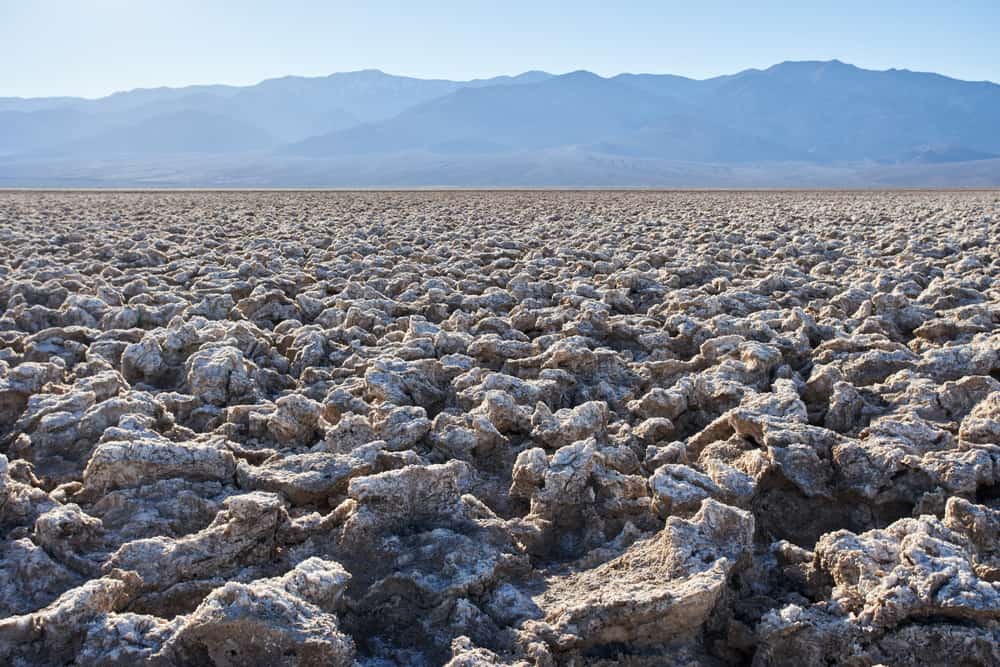
#8. Experience One Of Death Valley’s Greatest Mysteries At The Racetrack
If you’re looking for unusual things to do in Death Valley and mysterious happenings that can’t quite be explained, you’ve come to the right place. The Racetrack Playa draws the attention of visitors from all around the world because of the rocks that seem to have moved across the dry lake bed all by themselves. As the rocks move across the playa, they leave a track behind them marking where they’ve been. The rocks only move every few years, and though there are many theories, no one has confirmed how or why. Remarkably no one’s ever seen them move either.
The Racetrack is not as easy to get to as many of the other attractions in Death Valley. A 50 mile drive from Furnace Creek will take you to the start of a dirt road where you’ll travel for another 27 miles (roughly 1.5 hours). Driving down the dirt road requires a 4 wheel drive and a lot of patience. Plan on spending a good chunk of the day traveling to and experiencing the wonders of The Racetrack. The benefit of its remote location is that you won’t be sharing the space with many tourists. This relatively untouched playa is yours to take in and enjoy.
The surface of The Racetrack Playa is dirt. As soon as it rains the ground becomes damp and turns to mud. On days when the ground is damp, it’s best to observe the natural phenomenon from the edge of the playa. If you walk across the landscape, your footprints will remain in the ground, and since Death Valley gets such little rainfall, they’ll likely stay there for a long time. Though it should be self explanatory, you shouldn’t touch or move the rocks either. Racetrack Playa is spectacular because the powerful forces of nature made it that way, and hopefully it will remain that way for future tourists to enjoy.
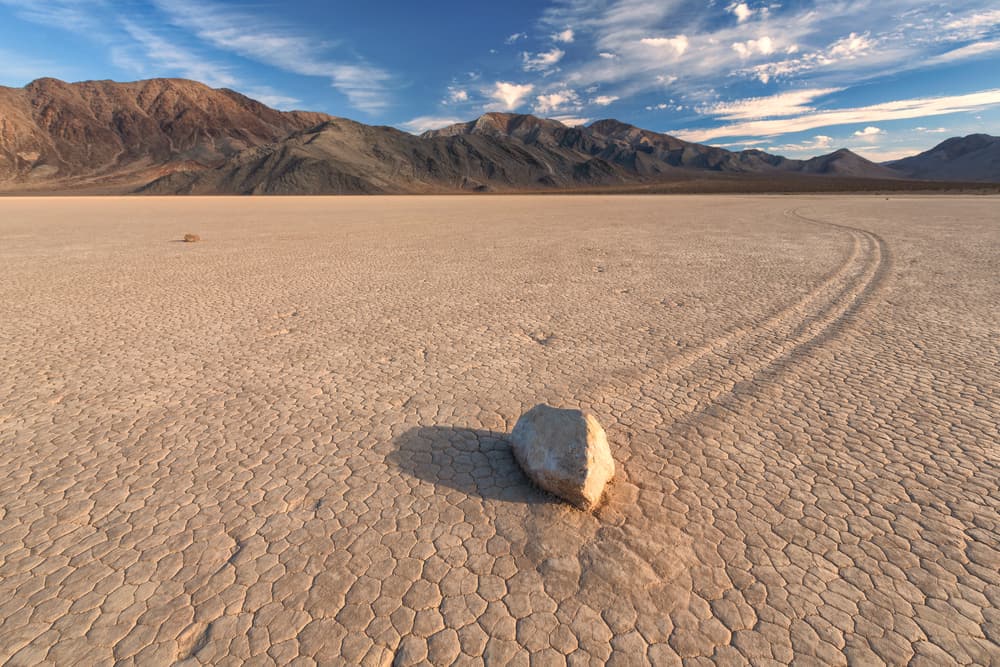
#9. Camping Is One Of The Best Things To Do In Death Valley When Visiting For More Than One Day
When planning a multi-day visit, one of the best things to do in Death Valley is to camp in the park under the stars. There are nine different National Park service campgrounds in Death Valley of varying site numbers and rates. Due to extreme temperatures in the summer, Sunset, Texas Springs, and Stovepipe campgrounds are all closed for the summer season. All of the campgrounds are first come, first served for 1-4 nights, except you need to make reservations for Furnace Creek from October 15-April 15. Many accommodate both RVs and tents, and the two campgrounds farthest from Furnace Creek require 4 wheel drive vehicles to reach. It’s acceptable to arrive at the campground at any time of day, as payment is done through a kiosk at the site.
You won’t find lush forests or babbling creeks in the desert of Death Valley, which means many of the camp sites are open and exposed (with the exception of the high-country sites that require a 4×4). But don’t let that deter you from camping. Death Valley has a beauty that’s all it’s own. Look beyond the other campers to the majestic landscape surrounding all of you. Watch the setting sun dart its last rays between the mountain peaks, and when darkness takes over the campground, look to the sky for the most brilliantly clear display of stars. With little to no light pollution around the campgrounds, the sky ends up being the star of the night show.
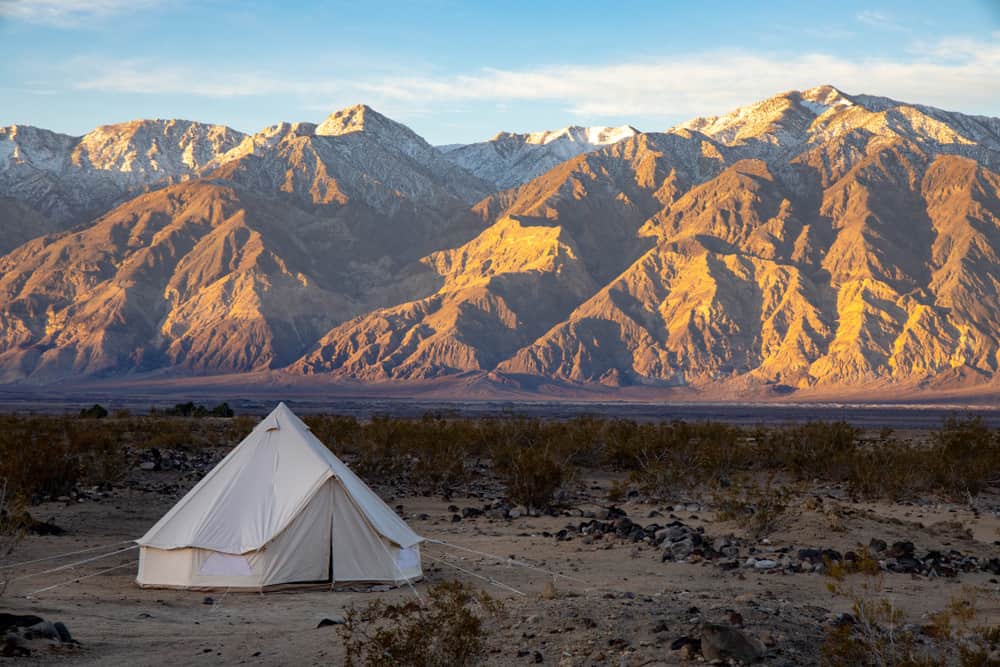
When To Visit Death Valley
Spring is the best time of year to visit Death Valley and as a result is the busiest time. The biggest draws of springtime are the weather conditions, with average highs in the low 80s and average lows in the mid 50s. If the right rain conditions have been met, it’s also possible to see brilliant colorful desert wildflowers in bloom, adding to the already diverse landscape of Death Valley. All the activities that made our list of things to do in Death Valley are perfect for the spring because weather won’t be a hindrance. Spring is also a great time for camping and spending as much time outdoors in the middle of nature’s stunning beauty.
Fall is also a good time to visit Death Valley, particularly starting in mid-October when the campgrounds that closed for summer start to reopen. October is when the high temperatures drop back below 100 degrees, and evenings bring very reasonable temperatures in the low 60s. The park will also be far less crowded than during the spring months, and you can enjoy more solitude as you explore the park.
Winter is everything you wouldn’t expect in a place called Death Valley. Contrary to what its name would have you assume, Death Valley actually gets cool in the winter with highs in the 60s and 70s and lows in the 30s and 40s. It is very rare for the park to receive rainfall, but the highest probability of experiencing rain is in January and February. Though you may not want to tent camp in the winter months, the rest of Death Valley can still be enjoyed to its fullest in the winter.
Summer is hot as you might have already assumed. The high in the summer hovers somewhere around 115 degrees with days reaching 120 degrees or more. Though the temperatures go down to the 80s at night, camping on the valley floor is not ideal. If you’re looking for more comfortable summer camping conditions and have a 4×4 vehicle, you can try the two high country campgrounds. These daytime temperatures are hot for anyone, and if you don’t normally live in dry heat climates, they might even be unbearable. That being said, tourists still flock to Death Valley in the summer. Though the list of comfortable things to do in Death Valley dwindles as the heat rises, the National Park is still beautiful, and the intrigue of being in a place with such extreme temperatures is a huge draw particularly for foreigners. For many tourists, just getting a picture with the thermometer outside the visitor center is enough to make their trip.
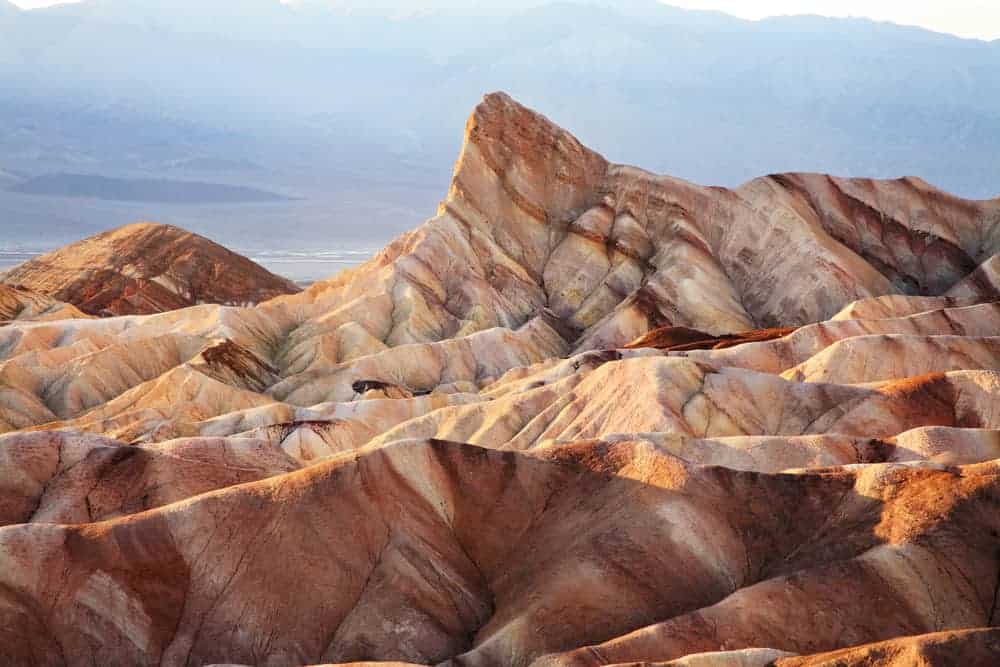
Death Valley, in all its fiery hot glory, is a must-see US National Park. The park holds such unique reminders of nature’s power, beauty and ability to craft and shape the land into the remarkable landscapes we are lucky enough to ooh and ahh over today. There’s no shortage of things to do in Death Valley that will leave you breathless. We hope you’ll take the time to visit this stunning desert, and we look forward to hearing about your own experiences in the comments.
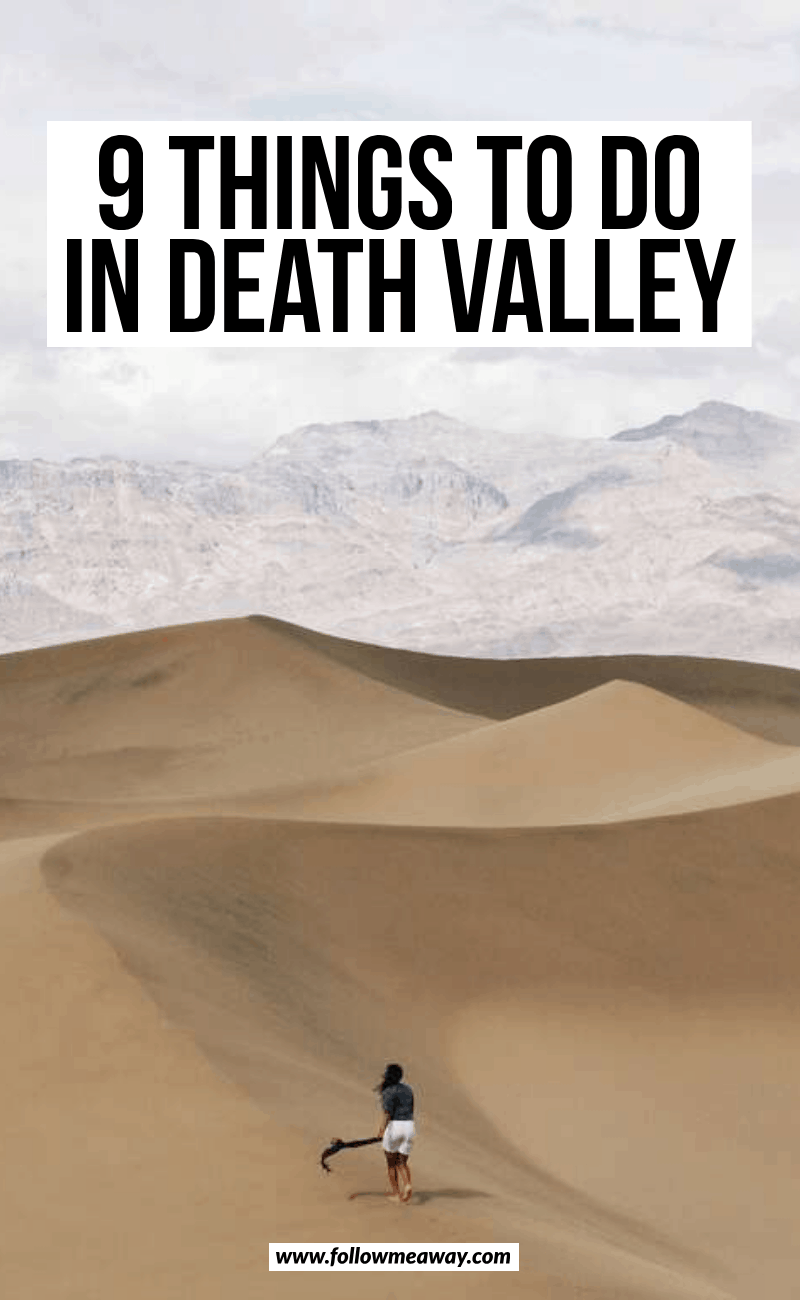
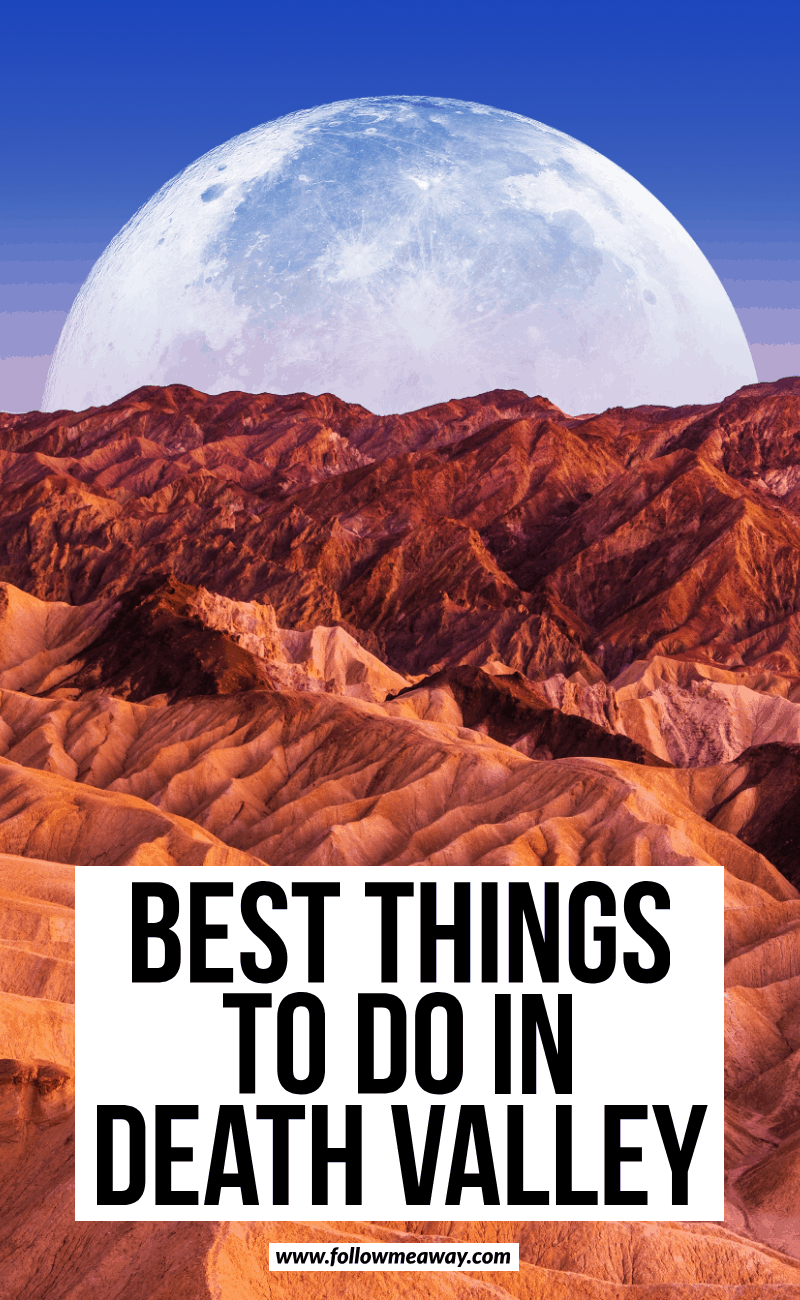
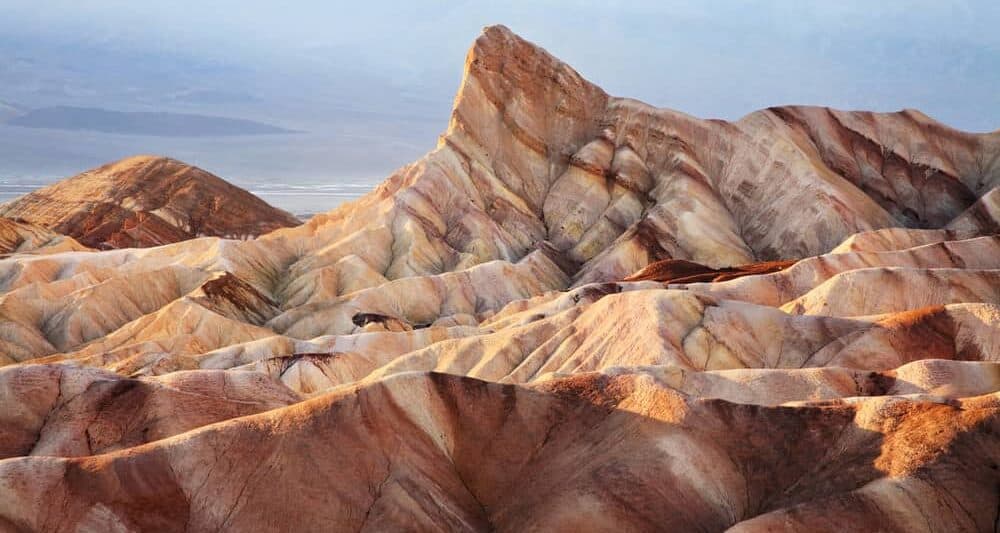
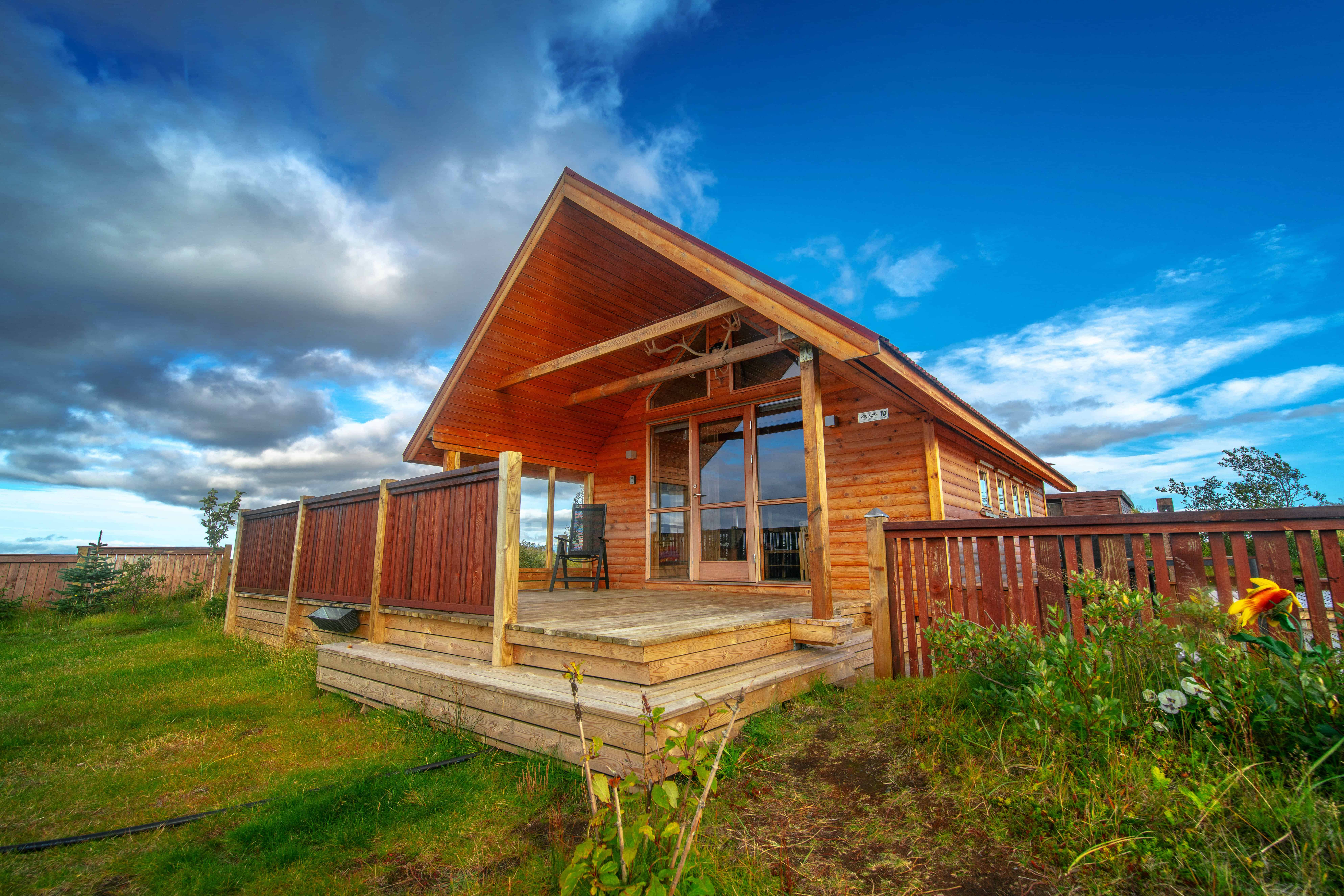 8 Best Airbnbs In Iceland All Around The Ring Road
8 Best Airbnbs In Iceland All Around The Ring Road